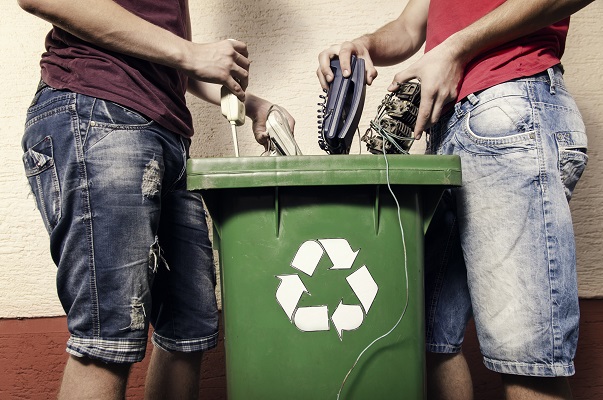At this point, everyone knows they can not just toss their old electronics in the garbage can. The components these devices are made of require comprehensive dismantling and disassembly at a professional recycling center, and these devices may contain hazardous materials that could be toxic to the environment if disposed of improperly. So while we know what not to do, does everyone understand how to best manage computer recycling securely and responsibly?
For any business today computer data protection solutions are a concern. Therefore, it is common to hesitate when choosing what to do with your electronics once they become obsolete. Here are smart tips for recycling your e-waste in a manner that will protect your data as well as the environment.

First and foremost, destroy and/or remove all data.
The first thing you should do is erase and remove your data. There are several resources online which can help erase data from various smartphones. Search for your model and use the manufacturer’s recommendations for data removal. Removing data from a smartphone is usually pretty simple, however when it comes to other types of electronics the process can become more complex.
Overwriting or clearing data from a hard drive usually appears to be a straightforward process. You download a data wiping software, wipe the hard drive and the data is erased. However, understanding the reliability and security of the process often requires more, and hard drive wiping is 99.99% effective only when done correctly. This is why most enterprise companies rely on a third-party IT asset disposition vendor who specializes in data destruction services to physically destroy and/or wipe stored data. These vendors can offer varying services both on-site at your office or back at their facility.
Hard drive wiping and data removal is often a customized service. There are various methods for data destruction, some allowing the hard drive to be reused and some rendering the device obsolete. The decision of which method to utilize can be based on different circumstances including what type of storage media you are working with. There is a detailed overview of this process in a previous blog post regarding data destruction methods, for more information.
Always research the recycler.
When researching companies for e-waste disposal, it is best to start with a simple phone call to understand their process. Visiting the site in person is always recommended to see their operations firsthand. Most large recyclers have on-site shredders and conveyor belts to help move and separate shredded material, preparing it to be transported to smelters and refineries.
If equipment is resold make sure you understand their ecommerce and resale operations to ensure no unauthorized items are being resold. It might be a good idea to also review their channels for resale and read their customer feedback.
Document the recycling process.
If you are a business, make sure you receive certificates and all other required documentation for your data security and corporate sustainability reports. Some IT asset disposition companies offer IT asset management and tracking features which enable you to know exactly where each device is at any point throughout the disposal process. This can help you manage inventory and watch specific items closely as needed.
Putting more effort into understanding this process and doing your due diligence can help ensure environmental and data protection. Data breaches are happening every day and becoming more sophisticated in their approach, and so must we.
Check out our white paper for more information regarding data destruction and IT asset disposition.